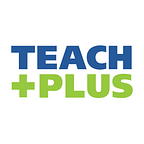Empowering Our Students During COVID-19
By Travon Jefferson
When students are empowered, they become critical thinkers leading to higher engagement and achievement. Before COVID-19, I empowered my student Juan to love and protect his culture when we learned about the New World and Conquistadors. I asked, “How do you know how to speak Spanish, Juan?” He smiled and said, “My mother taught me!” Then I asked him, “Who taught her?” Ultimately, Juan and I came to the question: How is it that his family originated from Mexico, but the Spanish language originated from Spain?
The pandemic forever interrupted the traditional way of teaching. As COVID-19 struck across the nation, it revealed a deep disparity in American values and deep-seated racism. COVID-19 laid bare the disparities in education as poor students, who are disproportionately from communities of color, were seemingly shut out if they did not have access to a laptop or Wi-Fi. However, there’s a silver lining when it comes to distance learning: empowerment. Only through empowering our students to value their education will we see success during virtual learning. Therefore, if we want to continue striving for academic success and educational equity, teachers must empower their students by diversifying their curriculum to become unabashedly anti-racist and liberating.
Mainstream curriculum seldom mentions Mesoamerican tribes and their culture. However, to empower Juan, I wanted him to look at writings from Christopher Columbus and other conquistadors about their feelings toward Mesoamerican tribes, half of Juan’s cultural ancestry. Furthermore, I showed Juan different videos and documents detailing his culture before, during, and after colonial exploration. We had incredibly powerful conversations about his culture and his love for every part of its history. Juan realized that from looking at his history, his knowledge became his power. He became a gatekeeper to his culture and his full history. My conversations with Juan found their way into my classroom. He started to ask questions and push my thinking as a teacher and gatekeeper of American knowledge. As a teacher, we want our students to have a voice and Juan was using his.
Before COVID-19, students were only limited to mainstream curriculum provided by the district. While this method has worked for many districts, in reality mainstream curriculum is detrimental for a diverse population of students. As our country’s student population becomes more and more diverse, districts must move to diversify their curriculum to match our students’ history and culture.
Teachers and students must have access to curriculum that amplifies the voices of different Americans from all walks of life, especially the voices of the oppressed. With America moving toward becoming anti-racist, school districts across Texas and elsewhere must also move to make education a top priority in the fight against racism if we truly want our students to succeed. Teachers and students must have room to explore additional voices, such as American activists Stokely Carmichael and Bobby Seale. If we want to empower our students, we must learn from the voices of the past who empowered others.
During remote learning, Juan completed 100% of his online work for my class. He has checked in with me, expressed appreciation for my teaching, and always reached out when he needed help. Juan was successful during COVID-19 because he was empowered from the start. If we want our students to be successful during and after the pandemic, we need districts to implement an unabashedly anti-racist curriculum that amplifies the diverse voices of America.
Travon Jefferson teaches 5th grade English language arts and social studies at Shadydale Elementary School in Houston ISD. He is a 2019–20 Teach Plus Texas Senior Fellow.
